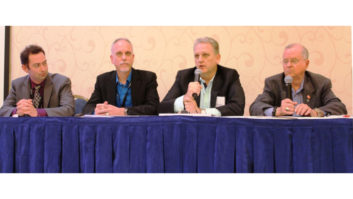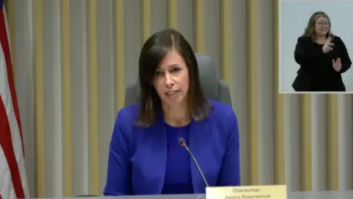WASHINGTON — The Federal Communications Commission stands by its assessment that a licensee can own as many translators in a market as it can secure — assuming appropriate coverage rules are followed.
And the commission ruled that (at least for one owner in North Carolina) a de facto FM station has not been created simply through the rebroadcasting of the same programming via seven translators.
The decisions come from an application for review filed by Triangle Access Broadcasting. In its 2017 objection, Triangle pointed to a section of the FCC Rules that says that when more than one FM translator is licensed to the same applicant and programming is provided to substantially the same area, a “showing of technical need” is required. Specifically, Triangle objected to the bureau’s decision that found that Curtis Media — specifically Eastern Airwaves LLC and FM 102.9 LLC — was not required to submit a technical-need showing for its seven fill-in FM translators. These fill-in translators are all located within the protected 60 dBμ contour of the co-owned primary station WQDR(FM) in Raleigh, N.C.
When making its initial ruling about the Curtis Media applications, the Media Bureau concluded that each digital subchannel constitutes a separate signal for the purposes of the technical-need rule, meaning that a showing of technical need is not required for two or more co-owned translators that serve substantially the same area but rebroadcast different digital subchannels.
Triangle argued differently after the initial decision. It said that while the first application for an FM translator within the primary station’s service contour does not require a showing of technical need, any subsequent application for an additional FM translator within the contour must include technical proof-of-need.Triangle also questioned the FCC’s open-ended definition of the phrase “substantially the same area” and argued that a translator modification application should not be accepted unless the primary station signal is on the air at the time of filing.
Upon review, the FCC found that the Media Bureau had decided correctly. It rejected Triangle’s argument that the phrase used in Section 74.1232(b) — specifically the phrase “whether or not such translators serve substantially the same area” — means that applicants need to show technical need every time an additional FM translator is applied for within the primary station’s service contour — even when the translators’ contours do not overlap.
“Rather, a showing of need is required only where the same programming would be provided to substantially the same area or where the question of need is raised by a party in interest who objects to grant of the application and makes a prima facie showing of the lack of need for the proposed new FM translator,” the FCC said.
As the commission clarified in its 1990 Translator Order, “unless a translator serves substantially the same area as another translator, the need for the translator is presumed,” the FCC said.
It also found that the bureau’s interpretation of the phrase “substantially the same area” gives translators some flexibility in translator siting while also limiting duplicative coverage.The FCC also rejected Triangle’s claim that the translators constitute what Triangle called a “de facto” FM station.
“The mere fact of one party owning multiple translators that rebroadcast the same programming, as here, does not in and of itself raise concerns regarding abuse of the commission’s rules,” the FCC said. Despite expressing concerns with the creation of de facto FM stations in its 2009 Translator Order, the commission declined to impose a numerical limit on the number of FM translators used by a single AM station.
It also rejected the assertion that a translator modification application is not acceptable for filing if the primary station signal is not yet on the air.







